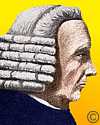
On 12 Apr 1705, William Cookworth was born, the English chemist who pioneered the manufacture of porcelain in Britain. He discovered deposits of kaolin and China stone (forms of decomposed granite) near St. Austell, Cornwall (1756). It was sufficiently pure to make a Chinese-style pure white porcelain. He spent many years experimenting to perfect the product.
For John Smeaton’s new Eddystone lighthouse, he formulated a hydraulic cement that both set quickly and hard enough to withstand erosion from the sea waves.
He patented his porcelain process (17 Mar 1768), and ran a factory for ten years, though unprofitably, before selling out to another manufacturer.
China clay is an important industrial product used today in coated paper, toothpaste, paint, rubber, plastics, pharmaceuticals and agricultural products.
Chances are, you are were not aware of William Cookworthy, but he paved the way producing fine china before the famous work of Josiah Wedgewood. To fill the gap in your knowledge about William Cookworthy, read a short article on The Plymouth China.
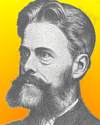
On 12 Apr 1897, Edward Drinker Cope died, an American paleontologist and prolific taxonomist of vertebrate paleontology. He led many natural history surveys in the American West for the precursors of the U.S. Geological Survey, making many important finds on his trips, including dinosaur discoveries in western North America.
He lived at a time of intense effort to discover more and more new and interesting fossils. His efforts were in competition with paleontologist Othaniel Charles Marsh, and the heated rivalry was notorious enough to be called “The Bone Wars” or “The Great Dinosaur Rush.”
During the early years of the Bone Wars, Charles Sternberg collected fossils in Kansas for Edward Drinker Cope. Today's book pick is: , by , who provides interesting insights into Cope and the other participants in the age of expeditions seeking paleontological specimens. The book is written in an easy reading style, and covers the full experiences of starvation, heat, bad water, bad tempered horses, broken wheels, wind and weather. All this is the background that in not visible when we see the result of their efforts on display in a museum.
It is available from Amazon, typically about (As of earlier time of writing - subject to change.)
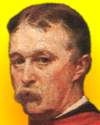 | Statistics are somewhat like old medical journals, or like revolvers in newly opened mining districts. Most men rarely use them, and find it troublesome to preserve them so as to have them easy of access; but when they do want them, they want them badly. |
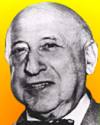 | The decisive step in evolution, the first step toward macroevolution, the step from one species to another, requires another evolutionary method than that of sheer accumulation of micromutations. |
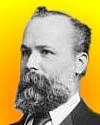 | The oldest picture-book in our possession is the Midnight Sky. |
| Before you look at today's web page, see if you can answer some of these questions about the events that happened on this day. Some of the names are very familiar. Others will likely stump you. Tickle your curiosity with these questions, then check your answers on today's web page. | |
| Births | |
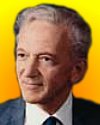 | Peter Safar, born 12 Apr 1924, was an Austrian-American physician whose pioneering procedure of mouth-to-mouth resuscitation is credited with saving countless lives. In the 1960s the technique was combined with new chest compressions, producing what is known today as CPR, or cardio-pulmonary resuscitation. What nickname was given to the mouth-to-mouth resuscitation procedure? |
| Deaths | |
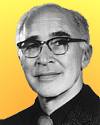 | George Wald (1906-1997) was an American biochemist who received a share of the Nobel Prize for Physiology or Medicine in 1967 for his work on the chemistry of vision. While researching the biochemistry of vision at Harvard University, he disclosed the presence of a certain vitamin in the retina of the eye. Which vitamin did Wald find in the retina? |
| Events | |
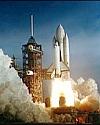 | On 12 Apr 1981, the first shuttle was launched into space, to become the first of NASA's series of reusable spacecraft. What was the name of this first shuttle into space? |
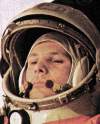 | On 12 Apr 1961, a Russian became the first man to orbit the Earth in a capsule called Vostok 1. What is the name of the first cosmonaut to orbit the Earth? |
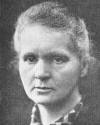 | On 12 Apr 1898, Marie Curie observed a meeting of the French Academy of Sciences, where one of her teachers, Prof. Gabriel Lippmann announced her discovery of a substance much more radioactive than uranium. Which element had Curie discovered that was more active than uranium? |
Fast answers for the previous newsletter for April 11: James Parkinson • Sony • ten • CSM (Command/Service Module) spacecraft name: Odyssey; Mission name: Apollo 13 • the decade including the year 1900.
 If you enjoy this newsletter, the website, or wish to offer encouragement or ideas, please send feedback by using your mail reader Reply button.
If you enjoy this newsletter, the website, or wish to offer encouragement or ideas, please send feedback by using your mail reader Reply button. Your click on a Facebook, StumbleUpon, or other social button on the site webpages is also a welcome sign of appreciation. Thank you for using them.
© This newsletter is copyright 2020 by todayinsci.com. Please respect the Webmaster's wishes and do not put copies online of the Newsletter — or any Today in Science History webpage. (If you already have done so, please remove them. Thank you.) Offline use in education is encouraged such as a printout on a bulletin board, or projected for classroom viewing. Online, descriptive links to our pages are welcomed, as these will provide a reader with the most recent revisions, additions and/or corrections of a webpage. For any other copyright questions, please contact the Webmaster by using your mail reader Reply button.
--
If you do not want to receive any more newsletters, Unsubscribe
To update your preferences and to unsubscribe visit this link
Executive Real Estate Business Class
-
"It was like a man with wings. It wasn't like anything you'd see on TV or in a monster movie." ...
About the publisher
Search This Blog
Blog Archive
-
▼
2021
(585)
-
▼
April
(57)
- On This Day for April 30 - George Washington inaug...
- Newsletter for Friday 30 April.
- On This Day for April 29 - British royal wedding, ...
- Newsletter for Thursday 29 April.
- On This Day for April 28 - Benito Mussolini execut...
- Newsletter for Wednesday 28 April.
- On This Day for April 27 - Independence for Sierra...
- Newsletter for Tuesday 27 April.
- On This Day for April 26 - Chernobyl nuclear accid...
- Newsletter for Monday 26 April.
- On This Day for April 25 - Hubble Space Telescope ...
- See How They Tracked Down Bin Laden
- Newsletter for Sunday 25 April.
- On This Day for April 24 - Installation of Pope Be...
- Newsletter for Saturday 24 April.
- On This Day for April 23 - Voting for Eritrea's in...
- Earth Day Bonus: Become a Climate Action Expert
- On This Day for April 22 - First Earth Day, Miguel...
- On This Day for April 21 - French elections held, ...
- Newsletter for Wednesday 21 April.
- On This Day for April 20 - Explosion on the Deepwa...
- Newsletter for Tuesday 20 April.
- On This Day for April 19 - American Revolution beg...
- Newsletter for Monday 19 April.
- On This Day for April 18 - The midnight ride of Pa...
- Newsletter for Sunday 18 April.
- On This Day for April 17 - Canada Act proclaimed, ...
- Newsletter for Saturday 17 April.
- On This Day for April 16 - Harriet Quimby's flight...
- Newsletter for Friday 16 April.
- On This Day for April 15 - Sinking of the Titanic,...
- Newsletter for Thursday 15 April.
- On This Day for April 14 - Abraham Lincoln shot, J...
- On This Day for April 13 - Alfred Dreyfus imprison...
- Newsletter for Tuesday 13 April.
- On This Day for April 12 - Launch of first space s...
- Newsletter for Monday 12 April.
- John of Gaunt: father of England’s medieval monarchy
- On This Day for April 11 - Napoleon's abdication a...
- Newsletter for Sunday 11 April.
- On This Day for April 10 - Anschluss approved in A...
- On This Day for April 9 - Fall of Baghdad, Jørn Ut...
- Newsletter for Friday 9 April.
- On This Day for April 8 - Celebration of the Buddh...
- On This Day for April 7 - Jack Nicklaus's first Ma...
- Newsletter for Wednesday 7 April.
- On This Day for April 6 - Olympics revived, Raphae...
- On This Day for April 5 - Battle of Maipú, Colin P...
- The history and origins of Easter
- On This Day for April 4 - Martin Luther King, Jr.,...
- Newsletter for Sunday 4 April.
- On This Day for April 3 - Implementation of the Ma...
- Newsletter for Saturday 3 April.
- On This Day for April 2 - Death of Pope John Paul ...
- Newsletter for Friday 2 April.
- On This Day for April 1 - Creation of Nunavut, Ser...
- Newsletter for Thursday 1 April.
-
▼
April
(57)
-
Blogroll
-
About
HistoryFact










0 comments:
Post a Comment